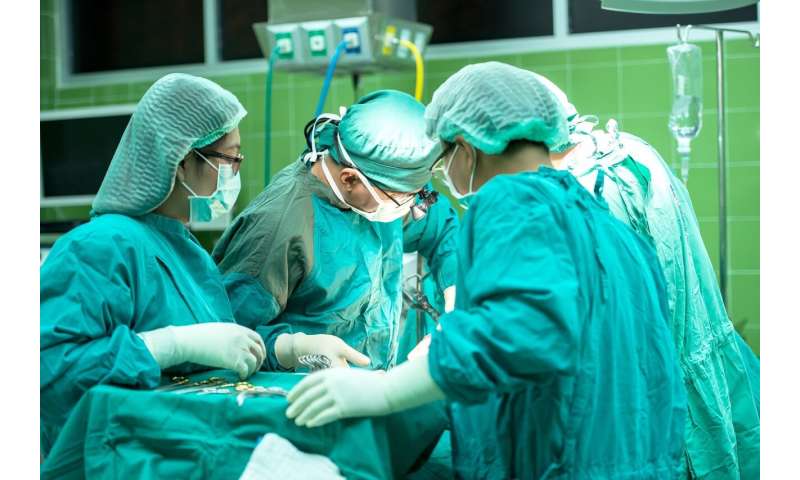Home » Health News »
New surgical approach for women at risk of ovarian cancer

A new two-stage surgical approach for cancer prevention is highly acceptable among premenopausal women at high risk of ovarian cancer, according to research led by Queen Mary University of London.
For women at high risk of ovarian cancer, the standard preventive practice is to offer removal of both the fallopian tubes and ovaries, but the surgery induces menopause in women who have not yet reached this stage of life. Early menopause is associated with side effects like increased risk of heart-disease, osteoporosis, neurocognitive decline and sexual-dysfunction. Hence, some women at high risk of ovarian cancer delay surgery until after they reach menopause. During this period they remain at much higher risk of ovarian cancer.
A proposed alternative is a two-step surgical protocol, which delays the induced menopause caused by the removal of the ovaries. In this protocol, the fallopian tubes are removed as an initial step to offer some risk reduction, and ovary removal is delayed until a later stage when women have reached menopause. This procedure provides some ovarian cancer risk reduction while avoiding detrimental consequences of premature surgically-induced menopause.
69 per cent interested in new surgical option
In the multicentre UK study, published in the British Journal of Obstetrics and Gynaecology and funded by the Rosetrees Trust and Barts Charity, researchers examined the acceptability of the proposed alternative two-step surgical protocol. The 638 study participants were all at increased risk of ovarian cancer; 346 had undergone standard risk reducing surgery, and 337 had not.
Among those who had undergone standard preventive surgery, 9.4 per cent of premenopausal and 1.2 per cent of postmenopausal women regretted their decision. Of premenopausal women who had not undergone standard surgery, 69 per cent found it acceptable to participate in a research study offering the proposed new surgical option. 38 per cent of women who had undergone standard surgery would have potentially (in hindsight) opted for the new two-step operation. The new two-step surgical protocol was particularly acceptable to women concerned about the sexual dysfunction side effects of ovary removal.
Patients sought for clinical trial into new surgery protocol
Lead researcher Professor Ranjit Manchanda from Queen Mary University of London and Barts Health NHS Trust said: “Undergoing an operation to prevent ovarian cancer can be a complex decision making process. Although removal of tubes and ovaries prevents ovarian cancer, it can lead to early surgical menopause which has significant detrimental consequences on long-term health. A number of women opt to delay or decline preventive surgery as a result.
“The new two-step operation offers additional options for women (who may have not undergone surgical prevention) to reduce their ovarian cancer risk while avoiding the negative impact of early menopause. Our study shows a large proportion of eligible women wish to consider this. UK women who wish to do so now have the option of joining the PROTECTOR (Preventing Ovarian Cancer through early Excision of Tubes and late Ovarian Removal) study (http://www.protector.org.uk).”
Dr. Faiza Gaba from Queen Mary University of London added: “While hormone replacement therapy (HRT) has been shown to mitigate some symptoms, it does not appear to alleviate sexual-dysfunction or increase satisfaction levels following standard preventive surgery involving removal of ovaries. However HRT-use in breast cancer unaffected women undergoing premenopausal removal of their ovaries is essential to reduce the risk of heart disease, osteoporosis and neurocognitive decline. The new two-step surgery offers further options to women considering surgical prevention.”
Treatments designed around women’s individual needs and choices
Dr. Vineeth Rajkumar, Head of Research at Rosetrees Trust said: “Rosetrees Trust is delighted to have supported Professor Manchanda’s study, which has paved the way for a clinical trial that could make a difference to thousands of women at risk of ovarian cancer.”
Source: Read Full Article


